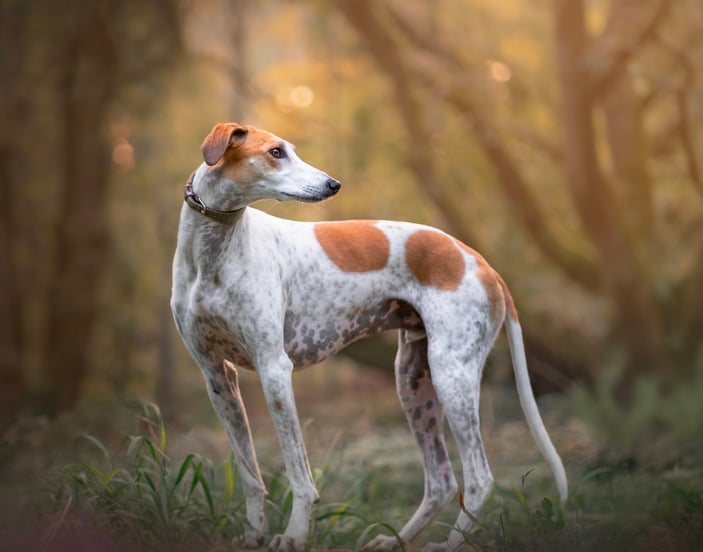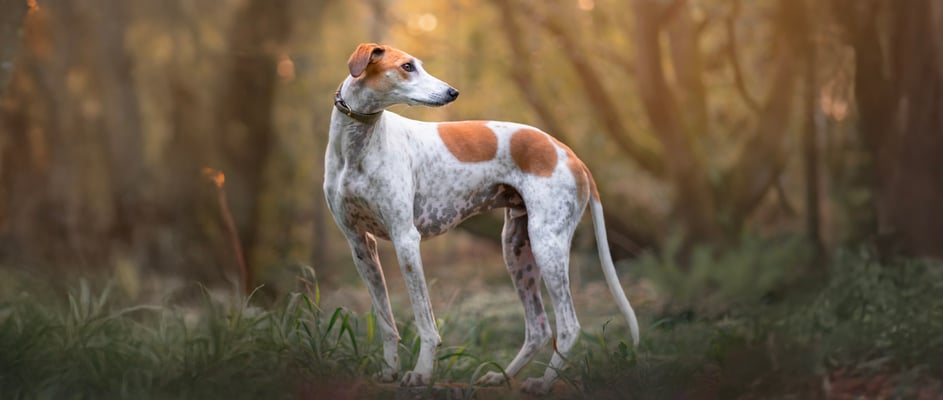The guide to owning a Lurcher.
Want to know everything there is to know about finding the right dog for you? Submit your email below, and we’ll send you a one-stop guide to help you on your pet ownership journey.
Jump to:
Stats at a glance.
A history of Lurchers.
A Lurcher is a cross-breed often created by mixing Greyhound or Whippet or Saluki lines with Collie or Terrier types.
These streamlined, elegant dogs first became popular with the gentry and farm dog owners who needed a swift hunting dog.
Some had a scruffy farm dog look, while others were sleek and refined, depending on the mix. Their remarkable speed, inherited from sighthound ancestors, made them perfect for short bursts to chase small prey.
Modern-day Lurcher owners appreciate their calm nature around the home, balanced by an enthusiastic desire to run free and burn off energy outdoors.
If you're interested in how dogs develop distinct traits, you might like exploring our best dog breeds for first-time owners to see how different breeds compare.
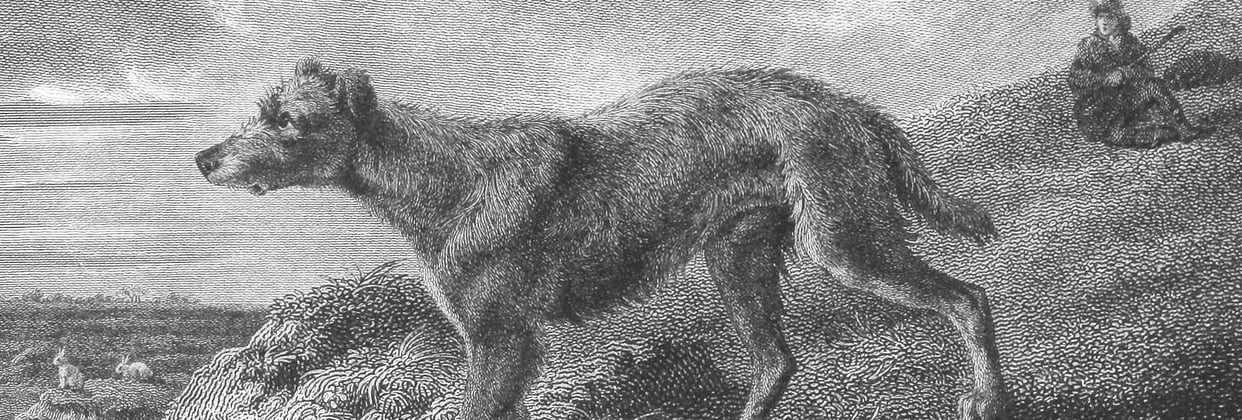

How much is a Lurcher puppy (UK)?
If you’re thinking of adding a Lurcher to your family, be aware that prices can vary widely depending on lineage, coat type, and the breeder’s reputation.
You might find puppies from around £200 to £800, but much less if you’re considering a rehoming rescue dog. You could pay more for a carefully bred Lurcher from a well-regarded breeder. It’s wise to talk to a trustworthy vet or do some research if you’re uncertain about fair pricing.
Be sure to choose a breeder who prioritises the pet's health and asks questions about your situation. Any health check certificates can also be a good way to see if they have any genetic predispositions.
For those new to adopting a puppy, our socialising your puppy article can help you get started on the right paw.
Colours and coats types.
Because Lurchers come from different breeds, their coats are as varied as their personalities. Some have a rough coat inherited from a Deerhound or Border Collie mix, while others sport a silky short coat from Greyhound heritage.
Colours can be black, brindle, brown, sandy, or even multi-toned. This variety means there really is a Lurcher for everyone.

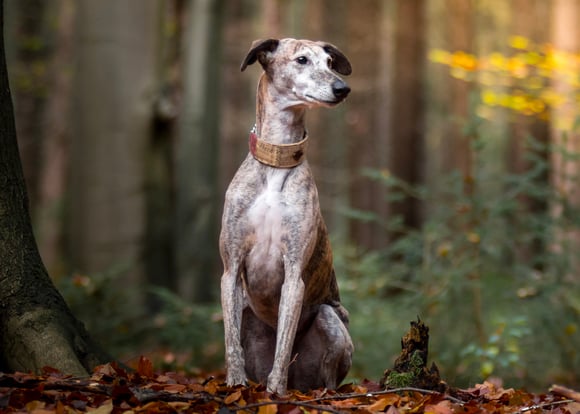
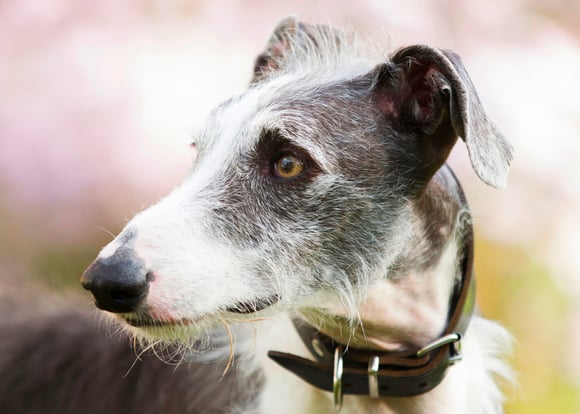
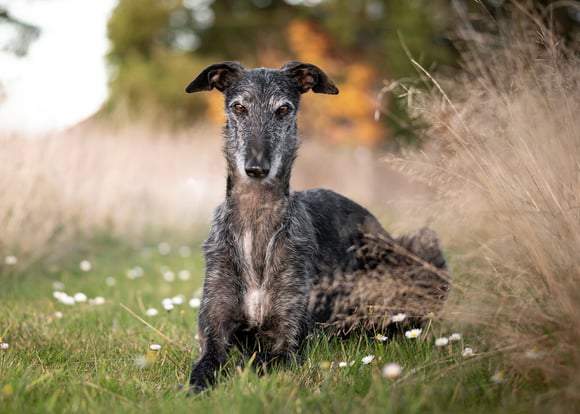

Size and weight.
Lurchers sit in the medium to large dog breed category due to their Sighthound ancestors. A smaller Whippet cross might weigh around 15 kg, while a larger cross with an Irish Wolfhound or tall Greyhound lines can reach up to 35 kg.
Heights range from around 50 cm to 70 cm at the shoulder. Keeping an eye on body condition scoring with help from your veterinary professional is key, especially if your Lurcher loves a nap on the sofa and endless snacks.


Temperament and behaviour.
The classic Lurcher temperament pairs a gentle, laid-back attitude at home with an eagerness to sprint when outside.
They’re typically affectionate, loving naptime and warm cuddles once they’ve burned off their energy.
Every dog is an individual, but many Lurchers are especially patient and tolerant, making them solid family companions.
Do Lurchers make good pets?
A well-socialised Lurcher generally makes a fantastic pet. They thrive in calm households yet still enjoy active owners who can provide daily walks and sprints.
They’re usually content snoozing on the sofa once their exercise needs are met. If you’re wondering whether a pet is right for you, check out the benefits of pets to see how dogs enhance our well-being.
Are Lurchers good with kids?
Many Lurchers are wonderful around gentle children. They tend to be patient, but it’s always important to supervise interactions and teach kids how to handle larger dogs with respect.
Caution is key if your Lurcher has a strong prey drive and your children have other small pets (or a favourite teddy!), so always do safe introductions.
Are Lurchers good with cats?
Due to their hunting dog instincts, some Lurchers may see cats as something to chase for fun. Dogs with lower prey drive, or those introduced properly, can learn to coexist with feline friends.
Remember that every dog needs time to adapt, so be patient and consult a vet or trainer if you need guidance.
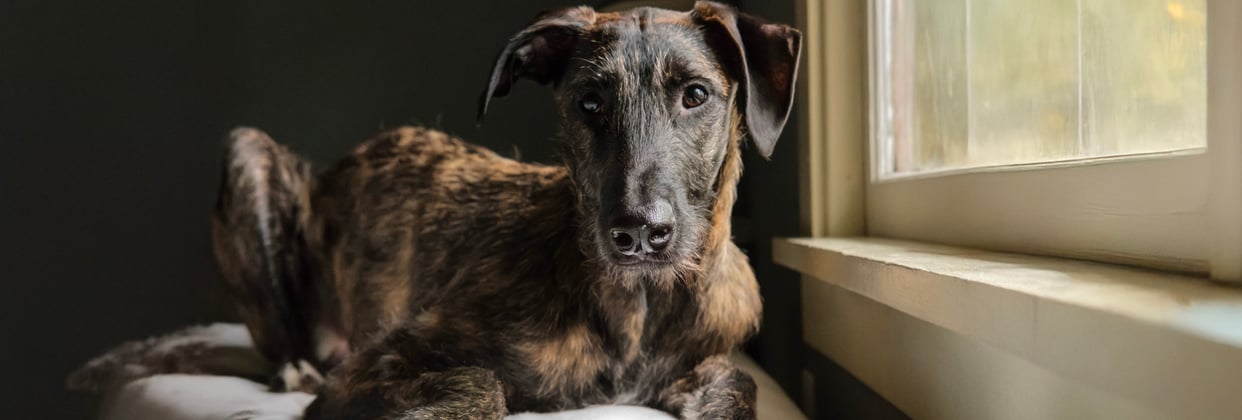

Do Lurchers bark a lot?
Many Lurchers aren’t particularly vocal, though it varies by individual. If raised with a terrier cross, some will bark at unfamiliar noises. Proper socialisation and training classes promote balanced behaviour.
They can form close bonds with their family, which means they might worry if left alone for too long. Providing puzzle toys, leaving on a radio, or booking a dog sitter or dog walker can help keep your dog’s stress levels down.
Can Lurchers be left alone?
As with many breeds of dog, a Lurcher can handle a few hours alone if they’ve been gradually trained to accept solitude.
On the other hand, if they’re bored, they might turn to chewing, digging, or barking. Short practice sessions, a comfy space, and positive reinforcement for calm behaviour work wonders.
Can Lurchers live in apartments?
Though they’re relatively quiet at home, they do need enough room to stretch out, plus safe outdoor spaces for short bursts of running.
An apartment could work if you commit to daily walks and the occasional off-lead sprint in a secure area.
Remember to check your local regulations, as large dogs sometimes have restricted off-lead access.
Training a Lurcher.
When it comes to training your Lurcher, consistency and positive reinforcement are your best friends.
Many Lurcher owners find these dogs to be highly trainable, though they can inherit a strong prey drive from Greyhound or Whippet lines.
Focusing on short, engaging sessions that tap into their natural instincts is key to teaching your dog in a way they understand.
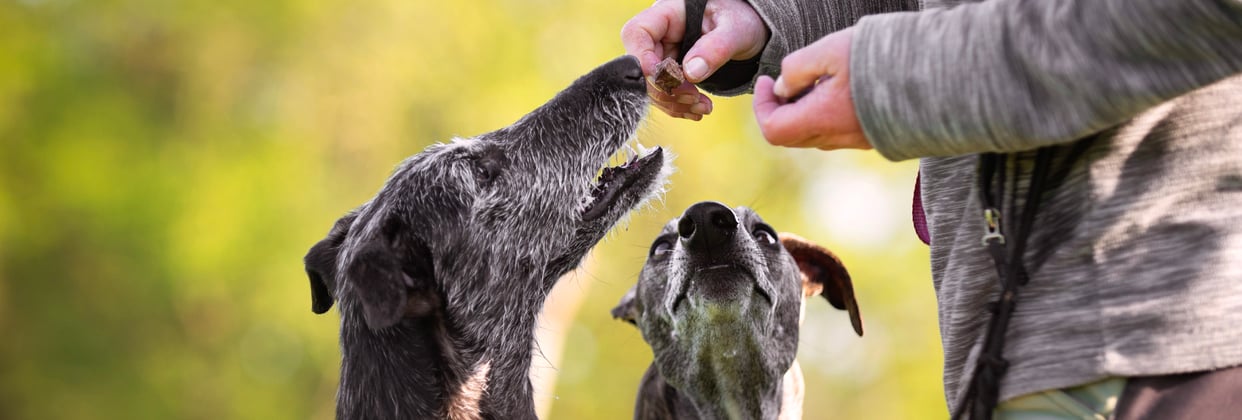

Are Lurchers smart?
Lurchers inherit cleverness from collie crosses or strong instincts from terriers. They often enjoy learning basic commands like ‘sit.’ They can be easy to train when sessions are fun and consistent, yet they might show a bit of independence thanks to their sighthound genetics.
Using positive reinforcement like treats and praise is best, especially when teaching your dog not to chase small animals.
Shedding and grooming.
How often should I brush my Lurcher?
It depends on whether your Lurcher has a rough coat or a short, sleek coat. Short-haired types only need a quick brush once a week, while rough or long-haired Lurchers might benefit from gentle grooming two or three times a week. Frequent brushing helps keep your dog’s fur healthy and gives you a chance to check for any lumps, bumps, or cuts.
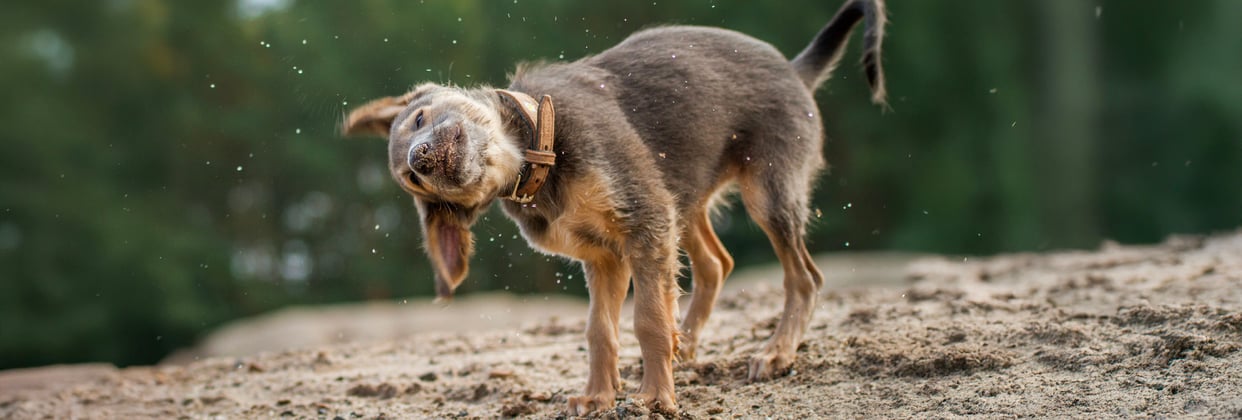

Exercise needs.
Exercise and mental stimulation.
Lurchers are known for their love of sprinting. Many do best when given a secure area to burn off energy in short bursts, followed by a stroll on the lead.
Target around 40–90 minutes total, but note that different exercise needs apply if your Lurcher has a heavier build or is older. Puzzle games, sniffing trails, and short training sessions all help stimulate their curious minds too.
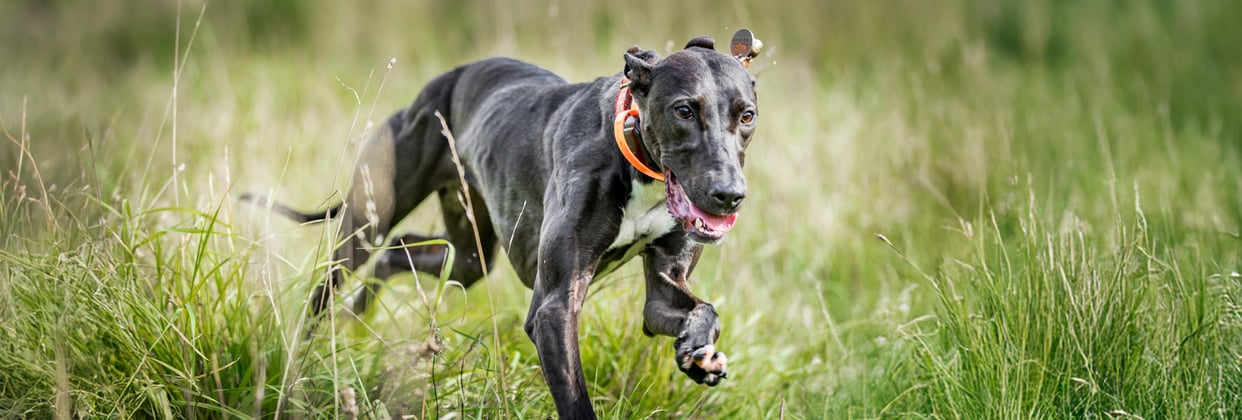

Feeding and nutrition.
Keeping a healthy weight is paramount, especially for a Lurcher with a lean build. Good-quality dog food, offered in portions suited to your dog’s size and activity level, maintains ideal body condition.
Typically, this breed will require two meals a day with quality sources of protein. Your vet can help recommend what is best for your pet. If you're a Waggel member, our free nutrition consultations can help.
If you notice weight changes or digestive issues, chat with your veterinary professional about possible dietary tweaks.
Each dog is an individual, so there’s no single perfect meal plan for the entire breed, but a balanced, meat-based diet usually suits a Lurcher.
Common health issues in Lurchers.
Below is a quick overview of certain conditions that may appear in Lurchers. Regular check-ups help you spot issues early and avoid higher vet bills down the line.
Note: Costs are approximate and can vary based on location and specific veterinary practices.
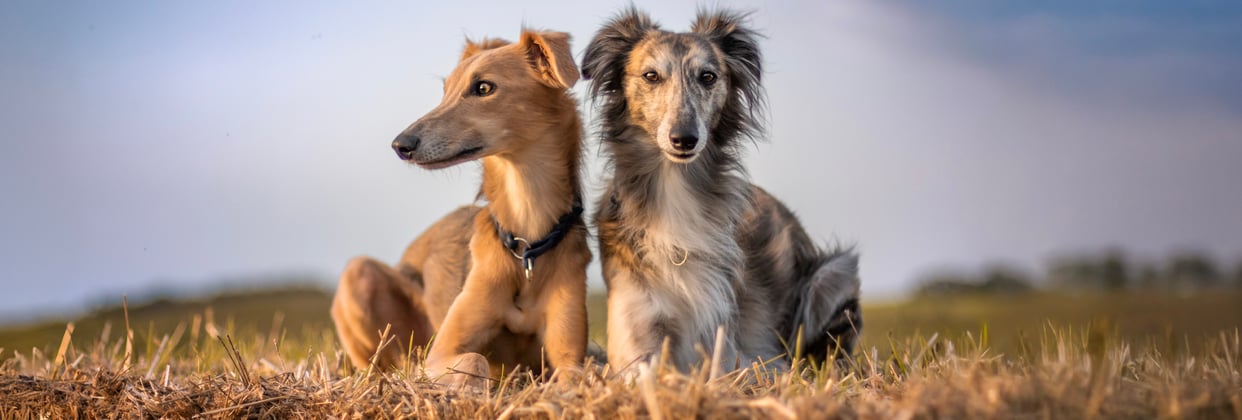

Pet insurance for Lurchers.
Given their speed and sometimes enthusiastic pursuit of prey, vet bills can grow quickly if accidents occur.
That’s why comprehensive coverage for your Lurcher is a smart choice. Get Lurcher pet insurance to safeguard against unexpected costs linked to accidents, illnesses, or those “whoops” moments during playtime.
You can also explore additional advice on caring for your dog in our guide on how to bathe a dog or our blog with tips on socialising your puppy. We’re here to help you keep your dog fit, content, and part of the family for years to come.
